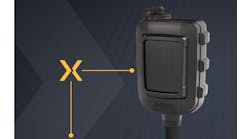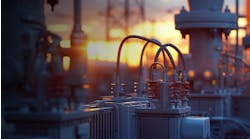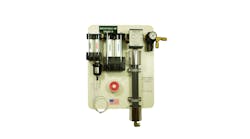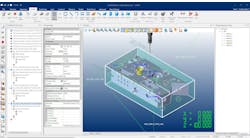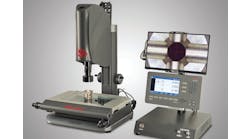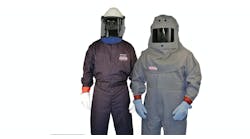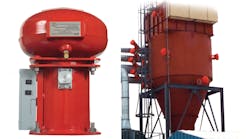Any operation that manufactures or processes bulk materials, or manages such materials as waste or by-products, must take seriously the new NFPA Standards for handling combustible dusts or particulate solids. Explosions may result from an ignition of a combustible gas, mist or dust when mixed with air during processing, handling, or storage of such materials. A rapid rise in pressure occurs in the containing structure, and if it is not sturdy enough to withstand the pressure, extensive damage and injury to personnel can occur.
After a string of incidents in the early 2000s, U.S. OSHA and other organizations stepped up the requirements, as with the Combustible Dust National Emphasis Program of 2008, which remains in effect.
The National Fire Protection Assn. (NFPA) does the same with NFPA 652 – Standard on the Fundamentals of Combustible Dust. This 2016 standard consolidates best engineering practice and provides reference to all of the existing combustible dust standards in a comprehensive document that applies to all facilities that handle potentially explosive dusts.
While the new standard unifies the various existing equipment and industry-specific codes, NPFA 652 goes further by specifying (for the first time) a deadline for owners and operators of at-risk facilities to conduct a dust hazard analysis. “Perhaps the most important aspect of the introduction of NFPA 652, is that is requires all owners and operators of a dusty industrial process to do a dust hazard analysis,” said Geof Brazier, president of BS&B Pressure Safety Management, a manufacturer of dust explosion prevention and protection technologies.
Brazier noted NFPA 652 specifically requires facilities to complete this dust hazard analysis within three years. However, recent revisions to NFPA 654 and 61 that additionally apply to many facilities have extended that deadline to five years.
While it is a step in the right direction, NFPA 652 essentially requires owners and operators of at-risk facilities to confront and address an issue that many may not fully understand, both in terms of the potential for such an event and what steps must be taken to mitigate those risks. For example, the NFPA Standards outline requirements that can range from improved housekeeping to installing dust-collection equipment and offering protective equipment for personnel. Protection or hazard mitigation devices may be required too, and because these typically represent some capital expenditure many owners and operators need information on the available technologies.
Explosion Protection Devices — To protect process equipment and personnel, a hybrid of technical measures may be required. Among the options are passive devices like vents or containment systems, and active devices like explosion suppression or spark detection and extinguishing systems.
In addition, chemical or mechanical isolation devices are required to protect connected equipment and piping from propagating to a secondary event, which can often be more dangerous and destructive than the initial event.
Explosion Vents — During the early stages of a dust or gas explosion, explosion vents open rapidly at a predetermined burst pressure, allowing the combustion process to escape to the atmosphere and limiting the pressure generated inside the process equipment to calculated safe limits.
Venting is the most widely adopted protection mechanism, in part because it is economical and requires little attention or maintenance. “In the U.S., there are well over 20,000 vents applied every year on equipment,” said Brazier, adding that a single piece of equipment might require multiple vents according to the NFPA 68 design calculations that assess both dust reactivity and the volume as well as shape of the equipment to be protected.
For decades, explosion vents have been designed using a “composite” approach that sandwiches plastic film between more resistant stainless-steel sheets with holes or slots, cut into it. These vents are designed to “open” at typically 1 to 1.5 PSI set pressure, a result of the slot and hole pattern placed into the sheet metal.
Over time, this type of vent is prone to tears in the plastic film between the process conditions and the atmosphere. Also, over time the slots in the stainless-steel sheets can admit particulates and debris, which may affect the functionality of the vent. “A vent that becomes heavier due to build-up will open slowly and less efficiently, and ultimately the pressure in the equipment will be higher than expected which is a safety concern,” explained Brazier.
In 1990, BS&B Systems patented the first single-section explosion vent, comprised of a solitary sheet of stainless steel in a domed configuration. Perforations around the perimeter to aid opening at the desired low set pressure are protected with gasket materials.
The single-section domed design produces a vent that is more robust, lighter and also largely eliminates the potential for build-up or contamination.
More recently it improved the design by altering the shape of the dome to a unique compound geometry delivering greater rigidity for high vacuum or vibration applications.
Though popular, explosion vents will not work for every application. With venting, the combustion process will release a large ball of flame into the atmosphere that might be 10 times the size of the protected equipment for a few milliseconds.
This might be an acceptable consequence for equipment that is outdoors at a remote location, but for applications within a plant compound or inside a building it could endanger personnel or equipment, and even lead to a secondary explosion external to the protected equipment.
In cases where a flame-ball must be avoided, flame arrestors can be deployed. These devices are designed to absorb the pressure wave, flame and at least some of the dust that would normally be ejected by a vented explosion.
The three-dimensional flame arrestors applied downstream of explosion vents are heavy and when installed directly on top of a vent damage can result.
To address this, companies like BS&B Pressure Safety Management provide a flameless system with the vent inside the flame arrestor. The heavier flame arrestor is mechanically mounted directly to the equipment, reducing the weight load transmitted through the more sensitive vent and eliminating the risk of damaging the vent. It serves the dual purpose of allowing easy inspection of the vent and arrestor while installed. NFPA Standards require periodic inspection of explosion safety equipment.
Suppression Equipment — Suppression systems or processes are the best solution when an explosion should be prevented altogether. Explosion suppression equipment detects a dust explosion in the first milliseconds of the event and then signals extinguishing modules to release a flame quenching medium into the process equipment. This effectively stops the explosion at its start.
“Suppression can be preferable for indoor equipment, simply because the explosion doesn’t really propagate; it starts, but it never evolves into a full-blown event,” said Brazier. For a 24/7 process, a suppression system can be very desirable, because quick clean-up and refit allow a fast return to production.
“If you use venting or flameless venting, you are allowing the explosion to fully develop in process equipment, so you have cleanup to deal with, you may have fire-related damages and other consequences that take time to get the process back into operation,” adds Brazier.
A typical suppression system consists of sensors and several explosion-suppression “cannons,” which propel an extinguishing agent, such as sodium bicarbonate, into the process equipment. Nitrogen is often used to provide the motive power.
Although some available systems combine nitrogen and extinguishing agent in a single canister, this means the cannon must be oriented vertically downward to discharge properly. If not, the extinguishing powder could be left behind.
In the BS&B suppression system the nitrogen and extinguishing chemical are kept separate until the instant of activation. For this reason, discharge cannons can be installed facing vertically down, horizontal, or even upwards. For installation purposes, this provides flexibility for placing cannons in the ideal location.
Separating the extinguishing agent and providing it in an easily replaced canister also means that on-site personnel can refit the system in case of an event. This can be a significant advantage given that resetting some systems requires a service technician.
Containment Systems — To “contain” an explosion, process equipment is built to resist the pressures generated by the combustion occurring inside a sealed container. Construction costs are high because the design pressure has to be typically over 100 psig, and sometimes over 150 psig, well above normal operating pressure conditions.
As a consequence, containment is only economically viable for low-volume or high value-added processes, or for toxic materials that cannot be released to the environment.
In such a system, the isolation devices are critical for preventing damage to connected equipment and piping. Fast-activating knife gate or pinch valves can be used, or chemical isolation systems.
With containment systems, however, isolation equipment must withstand greater pressures, up to 150 psig, unlike equipment required with vents or suppression devices that must survive only 3-10 psig. Regardless of the type and combination of equipment installed, the appropriate solution for each application is a hands-on, collaborative endeavor.
“There is always more than one way to achieve combustible dust safety,” said Brazier. “The expertise is in reviewing each option for a particular industrial process and arriving at a combination of technologies that is technically effective, as well as cost effective in meeting the owner/operator’s responsibilities under NFPA standards.”
